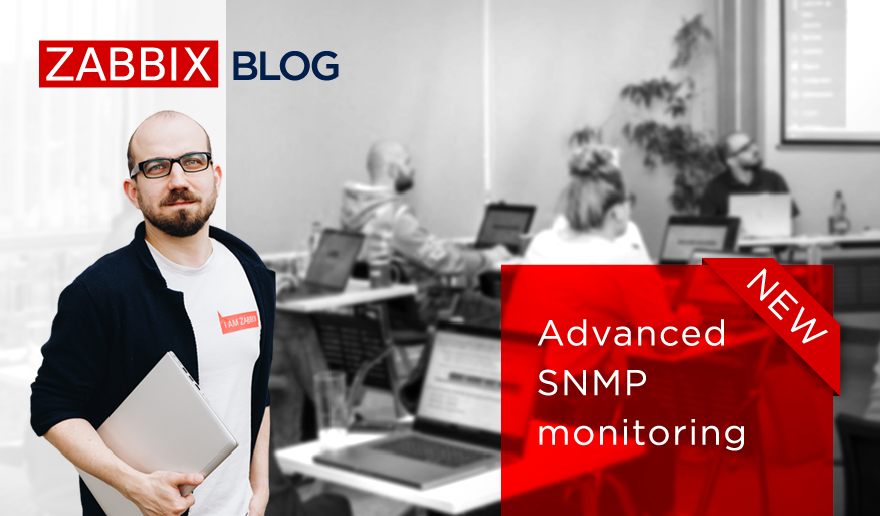Monitoring a Starlink Dish with Zabbix
Curious about keeping tabs on your Starlink internet performance? Whether you're off-grid or just love tracking your network performance, this post has you covered!

Aleksandrs Petrovs-Gavrilovs
Zabbix Certified Expert & Trainer
Latest articles

Building an “Academy of Uptime” with Kristine Lamberte

January 6, 2026
Community
If you’ve been working with Zabbix (or are planning to), you’re in luck – we’ve recently launched Zabbix Academy, a new learning platform designed to empower IT professionals and monitoring enthusiasts with self-paced, expert-led training. Zabbix Academy is the brainchild of Kristine Lamberte, Head of Training at Zabbix. Kristine was gracious enough to participate in […]

Michael Kammer

Keep Your Printers Happy with Zabbix and PaperCut NG

December 23, 2025
Integrations
We all know the panic when the print system goes down. As I’ve written about before, PaperCut NG is a fantastic tool for managing printing, but even the best software needs a watchful eye to prevent unexpected downtime.

Patrik Uytterhoeven
Open-source consultant and
Zabbix trainer at OICTS

What’s Up, Home? – 7 things to beware of if you monitor your home

June 16, 2023
Community
When reading this blog, you could easily think that everything is smooth sailing all the time. No. When you monitor your home IoT — or frankly, just USE your home IoT — you have plenty of small details to watch out for. I list them for you, so you don’t have to find them out […]

Janne Pikkarainen
Senior System Engineer at Forcepoint LLC

Zabbix SNMP monitoring one-day training course

June 13, 2023
News
SNMP – Simple network management protocol is a networking protocol that is extremely prevalent in network hardware such as switches and routers, as well as a variety of other devices such as printers, power supplies and even regular server hosts. Depending on the device, a wide array of metrics can be retrieved by using SNMP […]

Arturs Lontons
Zabbix Certified Expert & Trainer

What’s Up, Home? – Can ChatGPT help set up monitoring a USB-connected printer with Zabbix?

June 9, 2023
Community
Can you monitor a USB-connected printer with Zabbix? Of course, you can! But can ChatGPT help set up the monitoring? Well… erm… maybe! By day, I am a Lead Site Reliability Engineer in a global cyber security company, Forcepoint. By night, I monitor my home with Zabbix & Grafana and do some weird experiments with […]

Janne Pikkarainen
Senior System Engineer at Forcepoint LLC

What’s Up, Home? – Monitor your mobile data usage

May 26, 2023
Community
Can you monitor your mobile data usage with Zabbix? Of course, you can! By day, I am a Lead Site Reliability Engineer in a global cyber security company Forcepoint. By night, I monitor my home with Zabbix & Grafana Labs and do some weird experiments with them. Welcome to my blog about this project.

Janne Pikkarainen
Senior System Engineer at Forcepoint LLC

What’s Up, Home? – Monitor your iPhone & Apple Watch with Zabbix

May 20, 2023
Community
I’m entering a whole new level of monitoring and “What’s up, home?” could now also be called “What’s up, me?”. Recently my colleague did hint to me about Home Assistant’s HomeKit Controller integration just to get my HomeKit-compatible Netatmo environmental monitoring device to get to return value back to Zabbix without my Siri kludge. One […]

Janne Pikkarainen
Senior System Engineer at Forcepoint LLC

Zabbix in: exploratory data analysis rehearsal – Part 1

May 12, 2023
Technical
In this article, I’ll talk about how we can think of new metrics, new use cases, how to support our business and help the company with important results and insights using exploratory data analysis introducing and implementing some data science concepts using only Zabbix.

Paulo R. Deolindo Jr.
Zabbix Trainer at Unirede









